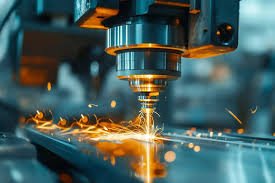In industries from aerospace to medical technology, precision isn’t just a goal; it’s a requirement. The difference between success and failure can come down to a fraction of a millimeter. When stakes are this high, standard manufacturing processes often fall short. This is where engineered solutions come into play, offering custom approaches that deliver exceptional accuracy and performance. These solutions are designed to meet the most demanding specifications, ensuring every component functions exactly as intended.
This article explores the world of precision engineering. We will cover what defines these specialized solutions, the advanced techniques that make them possible, and the critical role they play across various high-stakes industries. Understanding these processes reveals how modern manufacturing achieves seemingly impossible levels of accuracy, pushing the boundaries of what can be created.
What Are Engineered Solutions?
Engineered solutions are custom-designed manufacturing processes developed to produce highly specialized components with unparalleled precision. Unlike off-the-shelf methods, these solutions are tailored to solve specific challenges, whether it’s achieving complex geometries, working with difficult materials, or meeting extreme tolerance requirements.
The process begins not on the factory floor, but at the design stage. Engineers collaborate closely with clients to understand the component’s function, operating environment, and performance criteria. This collaborative approach ensures that every aspect of the manufacturing plan—from material selection to the final finishing touches—is optimized to achieve the desired outcome. The result is a component that integrates seamlessly into its final assembly and performs reliably under the most rigorous conditions.
The Pillars of Precision Manufacturing
Achieving exceptional accuracy requires a combination of advanced technology, deep expertise, and meticulous process control. Several key techniques form the foundation of modern precision engineering.
Advanced Machining Techniques
Traditional machining has evolved significantly, giving way to computer-controlled processes that offer incredible precision. Computer Numerical Control (CNC) machining is at the forefront of this evolution. By translating digital designs into precise machine movements, CNC machines can produce complex parts with consistency and accuracy that would be impossible to replicate by hand. This technology is essential for creating everything from intricate medical implants to critical aerospace components.
Sophisticated Metrology and Inspection
You cannot control what you cannot measure. Precision manufacturing relies heavily on advanced metrology—the science of measurement. Coordinate Measuring Machines (CMMs) are a cornerstone of quality assurance in this field. These devices use highly sensitive probes to measure the geometry of an object with microscopic accuracy. By comparing these measurements against the original CAD model, manufacturers can verify that every dimension is within its specified tolerance. This rigorous inspection process is vital for ensuring the quality and reliability of each part. Other tools, such as laser scanners and optical comparators, provide additional layers of verification, guaranteeing that no defect goes unnoticed.
Material Science and Selection
The choice of material is just as important as the manufacturing process itself. Different materials behave in unique ways under stress, temperature changes, and environmental exposure. Engineers must select materials that not only meet the functional requirements of the part but are also compatible with the manufacturing processes. For example, some high-strength alloys are notoriously difficult to machine, requiring specialized tools and techniques. Expertise in material science allows engineers to navigate these challenges and select the optimal material for both performance and manufacturability, a key aspect of high tolerance machining.
Applications Across Critical Industries
The demand for precision is widespread, but a few industries rely on these engineered solutions more than others.
Aerospace and Defense
In the aerospace industry, there is no room for error. Components used in aircraft and spacecraft must withstand extreme temperatures, pressures, and vibrations. Engineered solutions are used to create everything from turbine blades to structural fasteners, ensuring that each part meets the stringent safety and performance standards required for flight.
Medical Devices
From surgical instruments to implantable devices like pacemakers and artificial joints, the medical field demands the highest level of precision. These components must not only be dimensionally accurate but also biocompatible and sterile. Custom-engineered manufacturing processes ensure that medical devices are safe, reliable, and perfectly suited to their life-saving functions.
Automotive Technology
The automotive industry, especially in the high-performance and electric vehicle sectors, increasingly relies on precision-engineered parts. Components for engines, transmissions, and battery systems require tight tolerances to ensure efficiency, performance, and longevity. As vehicles become more complex, the need for these specialized manufacturing solutions will only continue to grow.
Partnering for Precision
Engineered solutions represent the pinnacle of modern manufacturing, blending advanced technology with human ingenuity to create components of exceptional accuracy. By focusing on tailored processes, rigorous quality control, and deep material expertise, these solutions make it possible to meet the toughest challenges across industries.
For any organization where precision is non-negotiable, partnering with an expert in engineered solutions is essential. This collaboration ensures that every component is not just made, but meticulously crafted to perform flawlessly. Choosing the right manufacturing partner is the first step toward turning complex designs into tangible, reliable realities.




